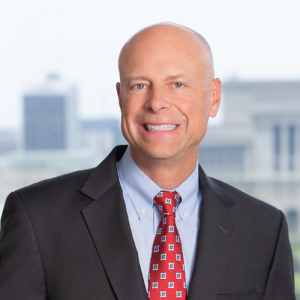On December 14, 2016, the Department of Justice (“DOJ”) released a report on fraud statistics regarding recovery amounts for False Claims Act (“FCA”) violations in fiscal year 2016 (“Report”). Reaching $4.7 billion from settlements and judgments, this year’s recovery is the third highest annual recovery in FCA history. Health care fraud accounts for a substantial portion of this recovery, totaling nearly $2.6 billion. A copy of the Report can be found here.
Background
The FCA is the government’s primary civil enforcement tool to prevent fraud on the government for false claims submitted to federal health care programs and is jointly enforced by the DOJ and Office of Inspector General (“OIG”) of the Department of Health and Human Services. The Obama administration placed high priority on vigorous enforcement against health care fraud beginning in 2009, and the substantial recovery rates reflect this. With the nearly $2.6 billion recovered in fiscal year 2016, the government brought its eight-year health care fraud recovery total, from January 2009 through December 2016, to $19.3 billion. The eight-year recovery total represents 57 percent of the health care fraud dollars recovered in the thirty years since the 1986 amendments to the FCA. Additionally, the Patient Protection and Affordable Care Act (“ACA”) provided for increased protection and incentives for whistleblowers, thus, the substantial increase in qui tam actions.
The DOJ’s continued dedication to aggressive enforcement of the FCA was reinforced in 2015 with the issuance of the Yates Memo, which calls for the pursuit of individual accountability for corporate misconduct. More information on the Yates Memo can be found here. Although the amount of resources distributed to government agencies for the purpose of combating health care fraud in the coming years is unknown, with such substantial return on investment, the government is likely to continue aggressive enforcement of health care fraud under the FCA.
Summary of the Report
The nearly $2.6 billion recovered in fiscal year 2016 is the result of both qui tam and government-initiated actions. Over 500 actions were brought by whistleblowers through qui tam actions with whistleblowers receiving over $450 million in shared recoveries. Although the majority of enforcement actions are initiated by whistleblowers, actions initiated directly by the DOJ more than doubled from fiscal year 2015.
The DOJ publication releasing the Report provides insight into the specific types of the health care providers that were targeted and significantly contributed to the substantial amount recovered.
Significant Recoveries
- The largest recoveries were obtained from the drug and medical device industry.
- One drug manufacturer paid $784.6 million for claims of knowingly reporting false and fraudulent prices on two different drugs to treat acid reflux.
- Another drug company paid $390 million for claims of providing kickbacks to specialty pharmacies in return for recommending a specific anti-rejection drug for kidney transplant recipients.
- Actions against hospitals and outpatient clinics accounted for $360 million in recoveries.
- One large health care system paid $244.2 million to resolve allegations against four of its hospitals for paying kickbacks in return for patient referrals.
- A major medical laboratory corporation paid $260 million to settle allegations for billing federal and state health care programs for excessive and unnecessary services and providing physicians with free items to induce referrals.
- Actions against nursing homes and skilled nursing facilities accounted for more than $160 million in recoveries.
- One of the nation’s largest contract therapy providers paid $125 million to resolve allegations of FCA violations for submitting claims to Medicare for rehabilitation services that were not reasonable, necessary or skilled and services that were not actually provided.
Practical Takeaways
The substantial amounts the government recovers through enforcement of the FCA raises the importance of implementing effective compliance programs to preclude qui tam and government-initiated actions in pursuit of these high recoveries. Health care providers should ensure their compliance programs include the elements established in prior OIG guidance and provide for policies and procedures to proactively combat potential violations of the FCA to avoid significant penalties.
If you have any questions, or if you would like additional information about this topic, please contact:
- Scott W. Taebel at staebel@wp.hallrender.com or (414) 721-0445;
- Katherine A. Kuchan at kkuchan@wp.hallrender.com or (414) 721-0479;
- Leia C. Olsen at lolsen@wp.hallrender.com or (414) 721-0466;
- Wesley R. Sylla at wsylla@wp.hallrender.com or (414) 721-0917; or
- Your regular Hall Render attorney.
Special thanks to Kelsey Anderson, law clerk, for her assistance with the preparation of this Health Law News article.
Please visit the Hall Render Blog at http://blogs.hallrender.com/ or click here to sign up to receive Hall Render alerts on topics related to health care law.


